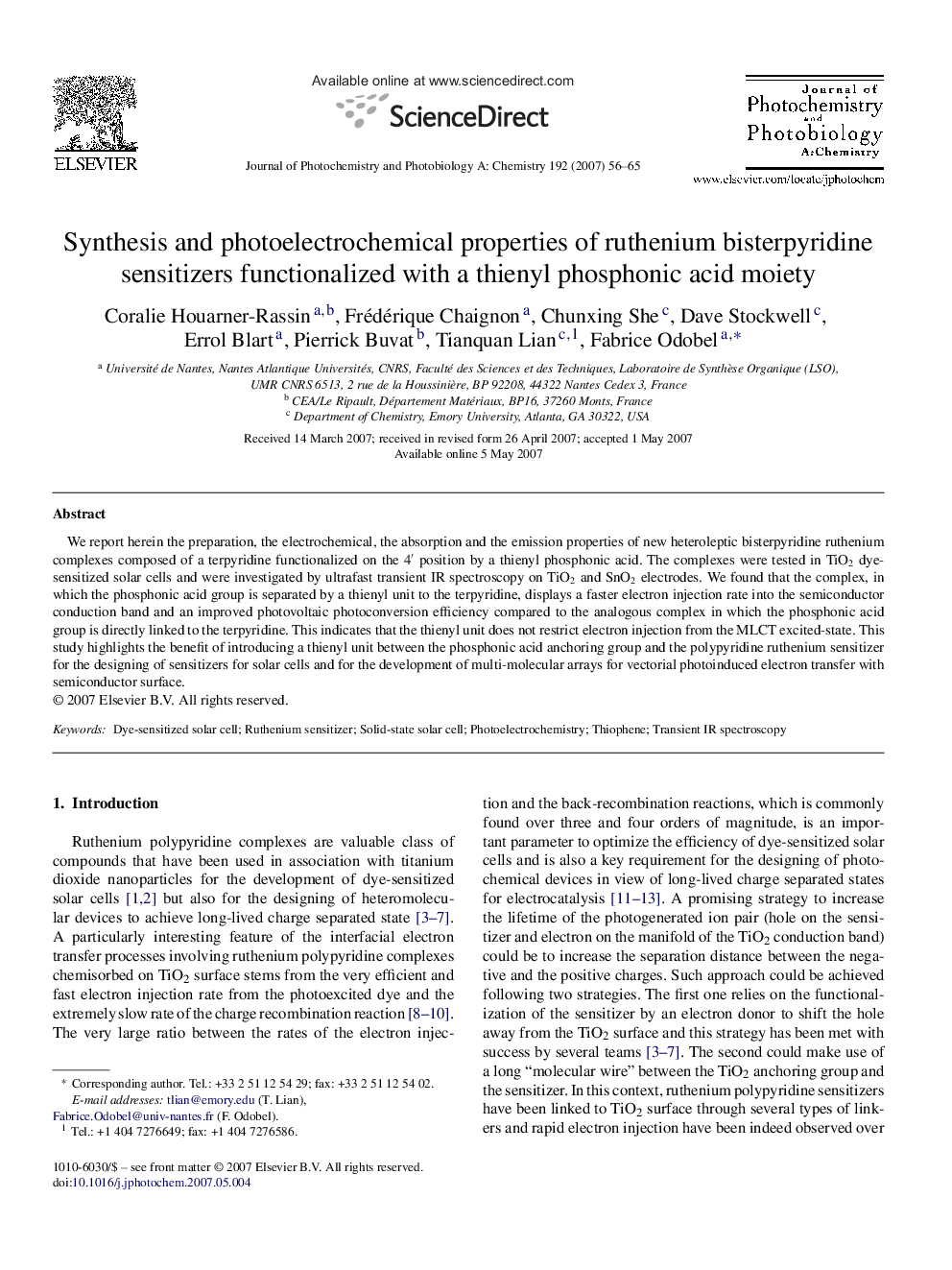| Article ID | Journal | Published Year | Pages | File Type |
|---|---|---|---|---|
| 27959 | Journal of Photochemistry and Photobiology A: Chemistry | 2007 | 10 Pages |
We report herein the preparation, the electrochemical, the absorption and the emission properties of new heteroleptic bisterpyridine ruthenium complexes composed of a terpyridine functionalized on the 4′ position by a thienyl phosphonic acid. The complexes were tested in TiO2 dye-sensitized solar cells and were investigated by ultrafast transient IR spectroscopy on TiO2 and SnO2 electrodes. We found that the complex, in which the phosphonic acid group is separated by a thienyl unit to the terpyridine, displays a faster electron injection rate into the semiconductor conduction band and an improved photovoltaic photoconversion efficiency compared to the analogous complex in which the phosphonic acid group is directly linked to the terpyridine. This indicates that the thienyl unit does not restrict electron injection from the MLCT excited-state. This study highlights the benefit of introducing a thienyl unit between the phosphonic acid anchoring group and the polypyridine ruthenium sensitizer for the designing of sensitizers for solar cells and for the development of multi-molecular arrays for vectorial photoinduced electron transfer with semiconductor surface.
